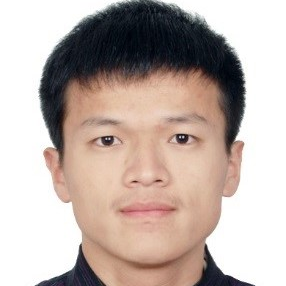Artificial Intelligence and Sensor Technologies in Agri-Food
A special issue of Sensors (ISSN 1424-8220). This special issue belongs to the section "Smart Agriculture".
Deadline for manuscript submissions: closed (28 March 2024) | Viewed by 10502
Special Issue Editors
Interests: deep learning; multimodal learning; capsule neural networks; self-supervised learning; domain adaptation; privacy-preserving technologies; efficient deep learning systems
Special Issues, Collections and Topics in MDPI journals
Interests: agricultural robotics and automation; environmental physiology of fresh produce and ornamental crops; modified atmosphere packaging; farm decision support systems
Special Issues, Collections and Topics in MDPI journals
Interests: AI; autonomous robots; human-robot interaction; interaction-enabling technologies; agri-robotics
Interests: intelligent autonomous systems; satellite/UAV remote sensing; precision agriculture; artificial intelligence; control engineering
Special Issues, Collections and Topics in MDPI journals
Interests: precision agriculture; UAV; information systems; farm machinery
Special Issues, Collections and Topics in MDPI journals
Special Issue Information
Dear Colleagues,
The agri-food system is undergoing a rapid digital transformation that connects local and global supply chains to address economic, environmental, and societal challenges. It is estimated that 70% more food will be needed by 2050 to feed the ever-growing global population sustainably, projected to rise to about 9.2 billion, whilst aiming at meeting the sector’s ambitious net zero targets (Food and Agriculture Organization of the United Nations). Considering that a total of 842 million people is estimated to be suffering from chronic hunger - regularly not getting enough food to conduct an active life - novel solutions are needed to accelerate food production and contribute to the sector’s decarbonization. Artificial Intelligence (AI), Robotics, and new sensor technologies can be transformative towards supporting the sector’s journey to increase productivity across the agri-food supply chain, contribute to environmental and financial sustainability, and achieve the sustainable development goals.
This special issue aims at disseminating the latest original research and reviews in exploiting new theoretical advancements, applications, hardware and software systems, and new challenges in the field of agri-food.
Potential topics, applied to any area within agri-food, include but are not limited to:
- Novel sensors and wireless sensor networks for internet of agri-food things
- Multimodal learning and domain adaptation for agri-food data
- Agri-food data sharing and privacy, such as federated learning, fully homomorphic encryption, differential privacy, etc.
- End-to-end deep learning systems for precision agriculture
- Agri-robotic systems in the wild
- Human-Robot Collaboration in agriculture
- AI-enabled smart polytunnel systems
- Multi-task learning for decision making under uncertainty
- Remote sensing and UAVs in agriculture
- Efficient and sparse machine learning systems
- Integration of robotic and computer vision systems
- Neuro-symbolic systems for explainable and transparent decision making in agri-food
- Natural language generation systems for automated reporting to agri-food stakeholders
- Advanced yield forecasting and sustainability action planning systems
Dr. Georgios Leontidis
Prof. Dr. Simon Pearson
Prof. Dr. Marc Hanheide
Dr. Jinya Su
Dr. Spyros Fountas
Guest Editors
Manuscript Submission Information
Manuscripts should be submitted online at www.mdpi.com by registering and logging in to this website. Once you are registered, click here to go to the submission form. Manuscripts can be submitted until the deadline. All submissions that pass pre-check are peer-reviewed. Accepted papers will be published continuously in the journal (as soon as accepted) and will be listed together on the special issue website. Research articles, review articles as well as short communications are invited. For planned papers, a title and short abstract (about 100 words) can be sent to the Editorial Office for announcement on this website.
Submitted manuscripts should not have been published previously, nor be under consideration for publication elsewhere (except conference proceedings papers). All manuscripts are thoroughly refereed through a single-blind peer-review process. A guide for authors and other relevant information for submission of manuscripts is available on the Instructions for Authors page. Sensors is an international peer-reviewed open access semimonthly journal published by MDPI.
Please visit the Instructions for Authors page before submitting a manuscript. The Article Processing Charge (APC) for publication in this open access journal is 2600 CHF (Swiss Francs). Submitted papers should be well formatted and use good English. Authors may use MDPI's English editing service prior to publication or during author revisions.
Keywords
- novel sensors
- sensor networks
- digital agriculture
- machine learning
- agri-robotics
- efficient AI systems
- remote sensing and UAVs
- internet of agri-food things
- privacy-preserving technologies










